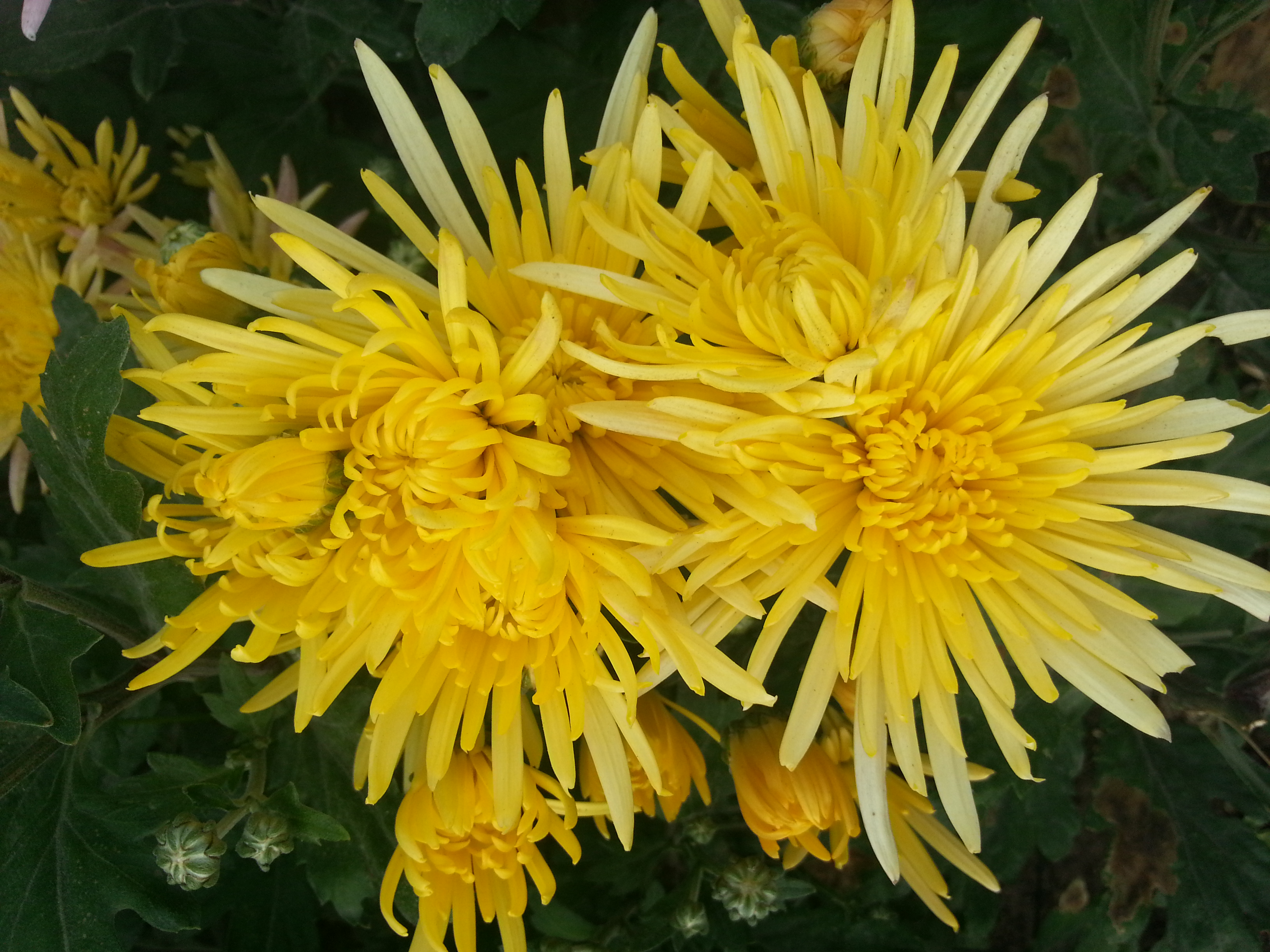Efficacy of biocontrollers and fungicides for the control of Pythium sp. in chrysanthemum (Dendranthema grandiflora (Ramat.) Kitam.)

Abstract
Damping off is caused by Pythium sp. in seedlings, which is the main cause of losses in chrysanthemum crops. This research aimed to evaluate the optimal dose of biocontrollers and chemical fungicides for Pythium sp. The application of the treatments was carried out both in a laboratory and on a greenhouse crop. A completely randomized design was used with 10 treatments (control, metalaxyl and chlorothalonil, azoxystrobin, Trichoderma harzianum, and Bacillus subtilis), applied at two doses: 100% and 150% of the commercial application. The results obtained in the laboratory phase showed that the inoculated control had the highest mycelial growth of Pythium sp., 36.43 cm in diameter. The treatments with chemical fungicides presented 100% control since there was no growth of Pythium sp. In the greenhouse, the chrysanthemum cultivation had the best results when T. harzianum was applied at a dose of 150% since only 9.33% incidence was observed. In terms of severity, the most effective treatment was the commercial dose of T. harzianum, with 4.9%. The best performance of the agronomic characteristics in the chrysanthemum plants was seen with the application of T. harzianum at a dose of 150% because the plants presented higher plant height, fresh radicular mass, dry root mass, fresh aerial mass, mass dry air, number of buttons, floral diameter and floral mass.
Keywords
Trichoderma harzianum, Bacillus subtilis, Root rot, Fungicides, Flower quality, Orthogonal contrasts
References
- Bae, Y.S. y G. Knudsen. 2005. Soil microbial biomass influence on growth and biocontrol efficacy of Trichoderma harzianum. Biol. Control. 32, 236-242. Doi:10.1016/j.biocontrol.2004.10.001
- Cano, M.A. 2011. Interacción de Microorganismos Benéficos en Plantas: Micorrizas, Trichoderma spp. y Pseudomonas spp. Una Revisión. Rev. U.D.C.A Act. & Div. Cient. 14(2), 15-31.
- Cubillos-Hinojosa, J., N. Valero y L. Mejía. 2009. Trichoderma harzianum como promotor del crecimiento vegetal del maracuyá (Passiflora edulis var. flavicarpa Degener). Agronomía Colombiana 27(1), 81-86.
- Dhingra, O.D. y B. Sinclair. 1995. Basic Plant Pathology Methods. CRC press, Cleveland, Ohio. 31-380.
- Durman, S., A. Menéndez y A. Godeas. 2003. Evaluación de Trichoderma spp. como antagonista de Rhizoctonia solani “in vitro” y como biocontrolador del damping off de plantas de tomate en invernadero. Revista Argentina de Microbiología 31(1), 13-18.
- Everett, K.R., S.G. Owen y J.G. Cutting. 2005. Testing efficacy of fungicides against post-harvest pathogens of avocado (Persea americana cv. Hass). New Zealand Journal of Plant Protection 58, 89-95.
- Ghasemi, S., G. Ahmadian, N. Jelodar, H. Rahimian, S. Ghandi¬li, A. Dehestani y P. Shariati. 2010. Antifungal chitinases from Bacillus pumilus SG2: preliminary report. World J. Mi¬crobiol. Biotechnol. 26, 1437-1443. Doi: 10.1515/biolog-2015-0112
- Harman, G. 2006. Overview of mechanisms and uses of Trichoderma spp. Phytopathology 96(2), 190-194. Doi: 10.1094/PHYTO-96-0190
- Henfling, J. W. 1982. Field screening procedures to evaluate resistance to late blight. International Potato Center (CIP).
- León, J. 2017. Minagri busca promover producción y comercialización de flores. En: Agraria.pe, http://www.agraria.pe/noticias/minagri-busca-promover-produccion-y-comercializacion-13923
- Moo-Koh, F., C. Alejo, A. Reyes-Ramírez, M. Tun-Suarez, R. Sandoval-Luna y A. Ramirez-Pool. 2014. Actividad in vitro del extracto acuoso Bonella flammea contra hongos fitopatógenos. Revista Agrociencia 48, 833-845.
- Moorman, G., S. Kang, D. Geiser y S. Kim. 2004. Identification and characterization of Pythium species associated with greenhouse floral crops in Pennsylvania. Plant Dis. 86, 1227-1231.
- Mostowfizadeh-Ghalamfarsa, R. y Z. Banihashemi. 2005. Identification of soil Pythium species in fars province of Iran. Iranian Journal of Science & Technology, Transaction A 29(A1), 79-87.
- Pérez, A., J. Rojas y D. Montes. 2011. Hongos formadores de micorrizas arbusculares, una alternativa biológica para la sostenibilidad de los agroecosistemas de praderas en el caribe colombiano. Revista Colombiana de Ciencia Animal 3(2), 366-385.
- Rinaudo, V., P. Barberi, M. Giovannetti y M. Van Der Heijden. 2010. Mycorrhizal fungi suppress aggressive agricultural weeds 333, 7-20. Doi: 10.1007/s11104-009-0202-z
- Rebollar-Alviter, A., L.V. Madden y M.A. Ellis. 2005. Efficacy of azoxystrobin, pyraclostrobin, potassium phosphite and mefenoxam for control of strawberry leather rot caused by Phytophthora cactorum. Plant Health Progress 12, 67-68.
- Sid Ahmed, A., M. Ezziyyani, C. Pérez-Sánchez y M.E Candela. 2003. Effect of chitin on biological control activity of Bacillus spp. and Trichoderma harzianum against root rot disease in pepper (Capsicum annuum) plants. European Journal of Plant Pathology 109, 418-426.
- Van der Plaats-Niterink, A. 1981. Monograph of the genus Pythium. Studies in mycology. Centraal bureau voor Schimmeicultures barn, the Netherlands 21, 7-198.
- Wang, H., Y. Huang, J. Wang, X. Chen, K. Wei, M. Wang y S. Shang. 2016. Activities of azoxystrobin and difenoconazole against Alternaria Alternata and their control efficacy. Crop Protection 90, 54-58. Doi: 10.1016/j.cropro.2016.08.022
- Xue, J., X. Chen, W. Jiang, F. Liu y H. Li. 2016. Rapid and sensitive analysis of nine fungicide residues in chrysanthemum by matrix extraction-vortex-assisted dispersive liquid–liquid microextraction. J. Chromatogr. B. Analyt Technol. Biomed. Life Sci. 975, 9-17. Doi: 10.1016/j.jchromb.2014.10.029
- Ghorbanpoura, M., M. Omidvarib, P. Abbaszadeh-Dahajic, R. Omidvard y K. Karimane. 2018. Mechanisms underlying the protective effects of beneficial fungi against plant diseases. Biological Control 117, 147-157.
